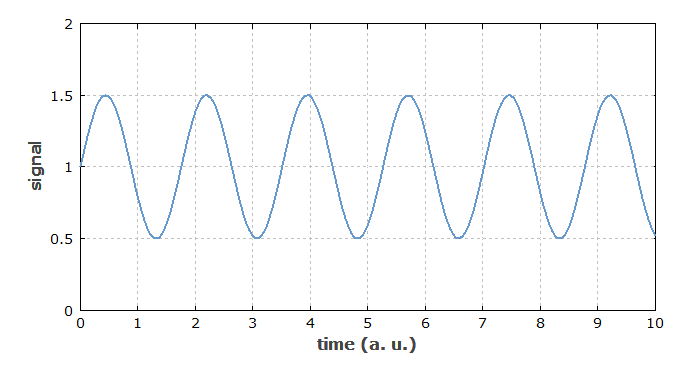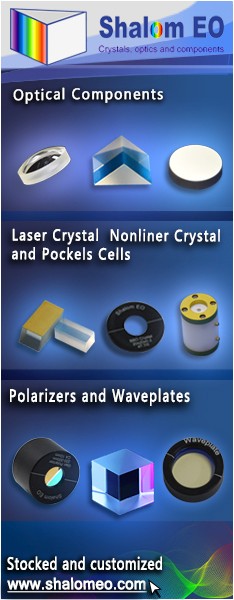Modulation Depth
Definition: a relative modulation amplitude, or (for a saturable absorber) the maximum change in absorption
German: Modulationstiefe
Categories:  light detection and characterization,
light detection and characterization,  lightwave communications
lightwave communications
Units: dimensionless or %
Author: Dr. Rüdiger Paschotta
Cite the article using its DOI: https://doi.org/10.61835/mda
Get citation code: Endnote (RIS) BibTex plain textHTML
When a quantity such as the transmission of an optical modulator is sinusoidally modulated, the modulation depth can be defined as the modulation amplitude (i.e. one-half of the peak-to-peak changes) divided by the mean value. A modulation depth of 100% thus corresponds to a situation where the minimum value of the modulated quantity is zero, and the maximum is twice the mean value.

Here, the modulation amplitude is half the mean value.
Modulation Depth of Saturable Absorbers
In the context of saturable absorbers, as used for passive mode locking or Q switching of lasers, the modulation depth is the maximum change in absorption (or reflectance) which can be induced by incident light with a given wavelength. This is an important design parameter in passively mode-locked lasers. A large modulation depth leads to strong pulse shaping by the saturable absorber, which can lead to a short pulse duration and reliable self-starting, but also to unwanted Q-switching instabilities.
For semiconductor saturable absorber mirrors (SESAMs), the modulation depth is specified as the maximum light-induced change of reflectance <$\Delta R$>, and may substantially depend on the operation wavelength. For use in mode-locked bulk lasers, it is typically of the order of 1%, while substantially larger values (order of 10%) are normally required for mode-locked fiber lasers. The achieved modulation depth is a substantial fraction of the unsaturated reflectance loss caused by the integrated absorber. It may be increased by using a thicker absorber or multiple thin absorbers, and it also depends on other design features; for example, it can be substantially reduced in anti-resonant designs, which decrease the optical intensity within the absorber.
More to Learn
Encyclopedia articles:
Questions and Comments from Users
Here you can submit questions and comments. As far as they get accepted by the author, they will appear above this paragraph together with the author’s answer. The author will decide on acceptance based on certain criteria. Essentially, the issue must be of sufficiently broad interest.
Please do not enter personal data here; we would otherwise delete it soon. (See also our privacy declaration.) If you wish to receive personal feedback or consultancy from the author, please contact him, e.g. via e-mail.
By submitting the information, you give your consent to the potential publication of your inputs on our website according to our rules. (If you later retract your consent, we will delete those inputs.) As your inputs are first reviewed by the author, they may be published with some delay.



Connect and share this with your network:
Follow our specific LinkedIn pages for more insights and updates: